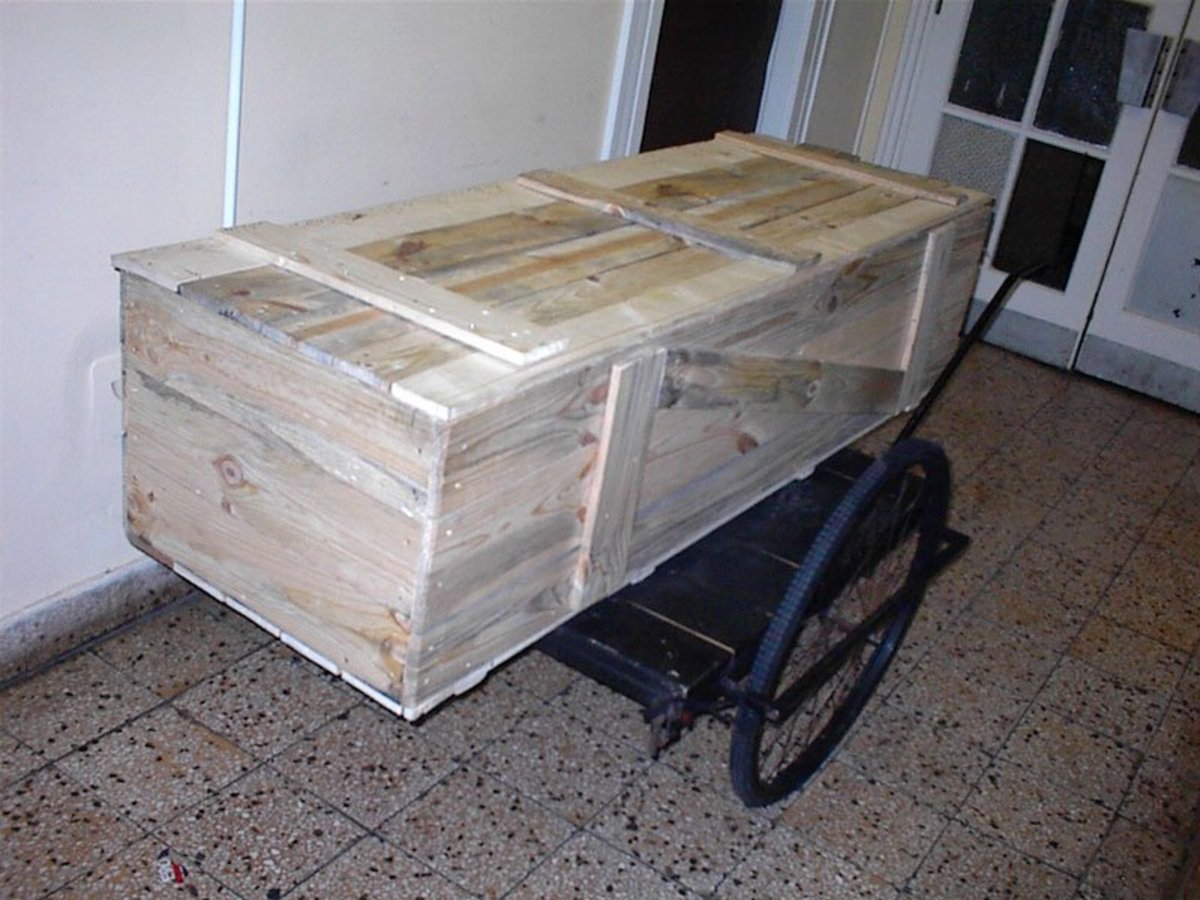An Unusual Funeral
Charles Blood was a local man, born in 1844 he lived at Bent Farm, Leigh. He died in 1909 at the age of 65 of heart trouble and was buried in the village churchyard.
The funeral went as well as a funeral could. The mourners began to leave the churchyard as the undertaker Henry Alcock, began to fill in the grave. The grave was about half full when the sexton, Henry's brother Edward Alcock, heard a tapping on the lid of the coffin.
They stopped digging at once and listened carefully. The knocking happened again and immediately Edward Alcock ran to find a doctor whilst the rest quickly dug the coffin back up.

Inside The Coffin
The coffin was lifted from the grave and carried into the church. The undertaker Henry prised open the lid of the coffin.
After a thorough examination by the doctor, it was confirmed that there were no signs of life. He also stated that Charles Blood was definitely dead when he was placed into the coffin.
The undertaker and the sexton were later interviewed, this is what they said.
The undertaker said;
When I took the lid off I found things were as when I screwed it down with the exception that the hands, which had been placed on the abdomen, were forced against the lid
— Henry Alcock, Undertaker
The taps sounded as if someone was knocking on an empty box. I heard about 20 taps in all. The noise was rather loud at first, but gradually got fainter. I have buried hundreds of bodies but have never known such a strange occurrence.
A curious part about the whole affair was that after we got the coffin back into the grave the sounds were repeated, but, of course, we were convinced that they proceeded from the inside of the coffin.
— Edward Alcock, Sexton
Buried Alive?
So the question still stands, was Charles Blood buried alive? The people at the funeral seemed to think though, although the doctor did not. There are no more records available about this incident though, so we will never know what truly happened.
What do you think?

Leigh, as Charles Blood Would Have Known It
Here is the way Leigh is described in Kelly's Directory of Staffordshire, 1904.
'Leigh is a parish pleasantly seated on the banks of the River Blythe, with a station on the Uttoxeter and Crewe section of the North Staffordshire railway, 6 miles north-west from Uttoxeter, 13 south-east from Stoke, 12 north-east from Stafford and 142 from London, in the Burton division of the county, South Totmonslow hundred, Uttoxeter petty session division, union and county court district, and rural deanery of Uttoxeter, arch-deaconry of Stoke-on-Trent and diocese of Lichfield and is sub-divided into the townships of Leigh, Dodsleigh, Fole, Middleton Green, Nobut and Withington.
The church of All Saints, rebuilt (with the exception of the tower) in 1846, at a cost of £6,272, with freestone procured from the neighbouring quarry at Hollington, is a cruciform building in the Decorated style, consisting of a chancel, nave, aisles, transepts, south porch and an embattled central tower containing 5 bells and a clock, the gift of Thomas Howe esq. The roofs of the nave and transepts are open-timbered, that of the chancel is groined in stone: the chancel screen and fittings are chiefly of oak: three windows of the chance are stained and there are also other stained windows, including one to the late Bishop of Lichfield and eight given by Thomas Howe esq at a cost of 1200; the great west window is a memorial to the Rev L F Bagot, late rector: in the south transept is an ancient altar-tomb of marble of exceptionally fine workmanship, with recumbent effigies of Sir John Aston and Dame Joan his wife, granddaughter of Sir Thomas Littleton, the distinguished Justice of the Common Pleas, dater 1523: there are 500 sittings.
The register dates from the year 1541. The living is a rectory, net income £450, with 70 acres of glebe and residence, in the gift of Lord Bagot, and held since 1870 by the Venerable Ernald Lane M.A formerly fellow of All Souls College, Oxford, prebendary of Lichfield, archdeacon of Stoke-on-Trent, provost of St Mary and John, Lichfield, and surrogate. There are charities other than educational in the hands of trustees, of the annual value of £90, distributed in money, bread, clothing and apprentice fees.
The principle landowners are Lord Bagot, Walter Evans esq of Darley Abbey Derby and John William Philips esq of Heybridge, Upper Tean. The soil is generally of a stiff marly nature, chiefly used for dairy purposes. The area of the parish is 6,189 acres of land and 34 of water; rateable value £12,341; the population of the civil parish in 1901 was 853 and of the ecclesiastical (All Saints) 915.
Do You Know More About Charles Blood?
If you have any further knowledge about Charles Blood, his family or his life I would love to hear from you.
If you like what you have read, please feel free to support me by following and signing up for my newsletter and/or buying me a coffee!
Thank you.

If you are interested in the history of Eyam and the plague then check out these books on Amazon.






